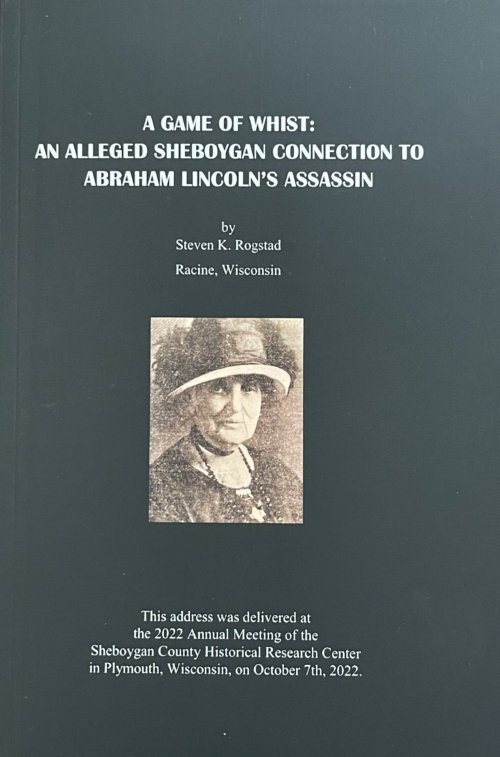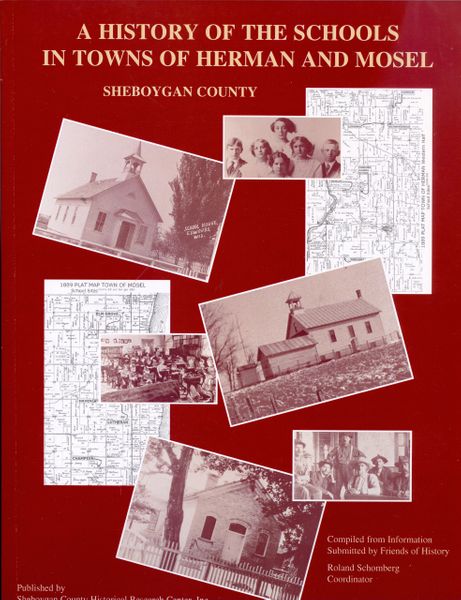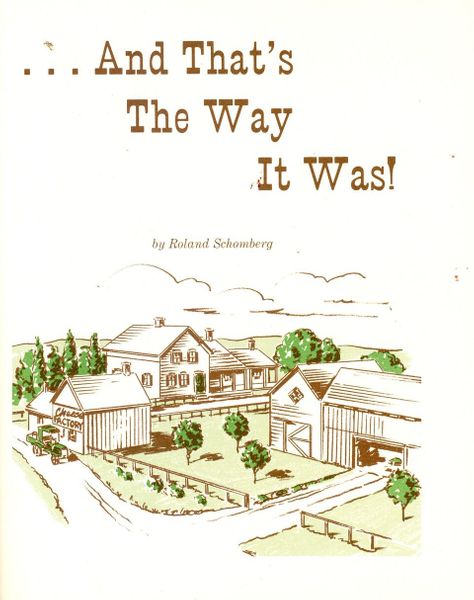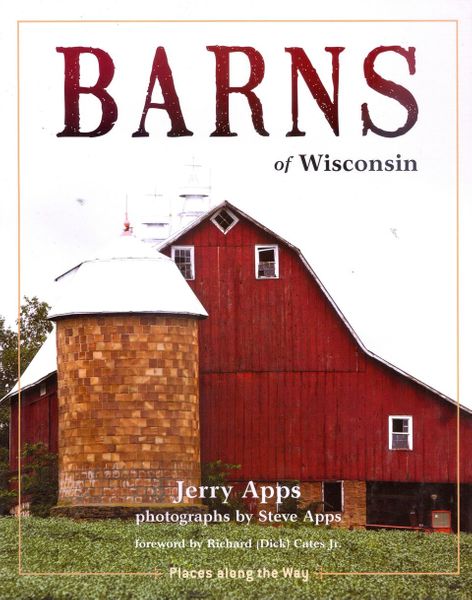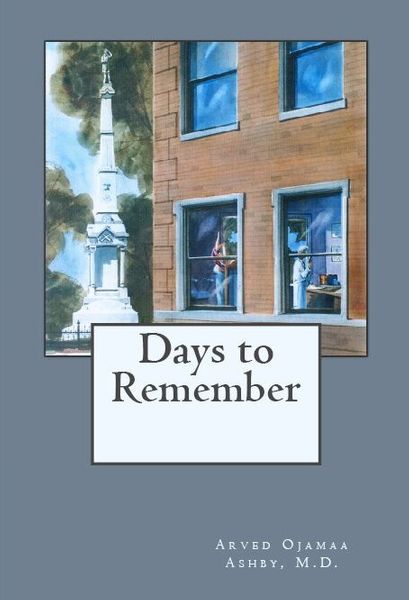-
By Bernard Michaels
The poignant story of immigration and settlement of the Irish in Sheboygan County, this book gives an account of the Byron-Lima Settlement, a span of some thirty miles in which over 600 Irish families settled. The community's irregular borders ran from Kennedy's Corners in Lima to the frame church of Byron's St. John. The town of Mitchell, Sheboygan County is at the heart of this story.
-
By Robert Spatt. The City of Sheboygan has many interesting and important "Firsts". This book documents many of those items. There is bound to be a chapter for every interest and although residents of Sheboygan will know many of these firsts, there are a lot of surprises. Some of the firsts are obscure such as the first bratwurst stand, the first department store, the first female principal of a school, the first baby born in Sheboygan; Others, such as the city founder, Farnsworth, and many of the sporting events, maybe remembered by many. The final chapter is entitled “Et Cetera.” Here are little known firsts that don’t fit into any category – Peter Dinkel and his canaries, Clemens Reiss the first to cross the city’s new Eighth Street Bridge in 1923, the street sprinkler who sprayed water on the dusty dirt streets and other obscure first facts. A book to pick up and read a chapter at a time then casually sprinkle conversations with a “did you know that….”
-
Sale!By Don Lau and Shirley Sager The schools covered in this book include Jefferson, South Cedar Grove, West Oostburg, Beaver Creek, Maple Grove, Fairview, Greene, Amsterdam, River Valley, West Cedar Grove, Liberty, Lakeview and Hoard.
-
Sale!This book takes us back through the history of education in the northwest corner of Sheboygan County. Starting both sections with a history of the named township, this team of writers takes us from the early settling of the area to the recent consolidations. Each school is looked at in detail and the many pictures of facilities, classes and notable events take the reader on an enjoyable journey through the past. Also included are a comprehensive index, 1889 plat map, master plan for education in Sheboygan County and biographies of Ray B. Lightfoot, Violet R. Littlefield and Doris G. Phipps. Schools covered: Russell, Taft, Garfield, Little Elkhart Lake, Joliet, Elkhart Lake, Harrison, Dewey, Lime Ridge, Rhine Center and Victory. Originally published in 1997, this reprint contains updates and improved imaging.
-
Sale!This book covers Oostburg school history from 1899-2005. A great timeline gives the reader a wonderful overview of what happened educationally and socially in Oostburg, Wisconsin. Class photos and memories and reflections are included.
-
Sale!
By Roland Schomberg
Originally published 1994, this 2008 update provides the reader with a look at the schools in the towns of Herman and Mosel from the town’s earliest history. Schools covered: Millersville, Howards Grove, Green Bay Road, Washington, Franklin, Pinehurst, Schwartzwald, Elm Grove, Haven, Champion, and Lakeview.
-
Sale!By Don Lau This book documents the growth of education in the City of Sheboygan. Did you know that Sheboygan had a Day School for the Deaf, A Fresh Air School- Tuberculosis- as part of the Third Ward School and was the first home of Lakeshore Technical College? Dozens of photos.
-
By Peter Laun
Elkhart Lake, Wisconsin, home to Road America today, was once a summer vacation retreat to thousands of city dwellers from Chicago, Milwaukee and St. Louis. The trains and interurban brought them to enjoy the cool breezes and waters of Elkhart Lake, Crystal Lake and Little Elkhart Lake. This volume discusses Joseph Moore, the founder and many other colorful characters of the village. It reminds us of Villa Gottfried, the Schwartz Hotel, Siebken's, Pine Point, Osthoff and Camp Brosius. Photos accompany each story.
-
Sale!By Roland Schomberg The stories for "...And That's the Way it Was" were inspired by Schomberg’s parents' life on their Sheboygan County family farm. Though not a literary masterpiece, the hand-written two-page chronicle of events, sprinkled with bits of his own philosophy, provided most revealing and interesting reading for the author. Reflecting on his part in the family history, he resolved to leave a similar legacy for his children and their offspring, so that they might be enlightened and amused by my narratives of life during Schomberg’s boyhood in Wisconsin.
-
By Jerry Apps The barns of Wisconsin are history books in red paint, sociology with gabled roofs, theology with lightning rods. In many ways barns are Wisconsin agriculture nailed together in buildings with cupolas on top. This revised edition was printed in 2010 and filled with beautiful images.
-
By Denny Moyer
This short book outlines the 100 year history of Baseball in Sheboygan, Wisconsin. Sheboygan's colorful history began with the Elwell Boys sponsored by Elwell Flour Mill and chronicles the many teams up to the present Sheboygan A's.
-
By Elmer Koppelmann A fascinating look at Sheboygan County's presidential races from the beginning of the county's involvement in national government (1848) through the 1988 election where George Bush defeated Michael Dukakis.
-
By Emma Hermann Thieme NO LONGER AVAILABLE -- OUT OF PRINT Sophie Hermann Knop was born and raised in Schaefer, Russia, a German-Russian community along the Volga River. In 1923, when she was 18 years old, Sophie traveled to Sheboygan, Wisconsin, where Gottlieb Hermann, had been living since 1912. During their long separation, Sophie endured great difficulties, including the Russian Revolution and the upheavals and famine that followed in its wake. Sophie willingly shared detailed descriptions of her life in Russia. Those “bits and pieces” follow a brief history of German migration to the Volga River area of Russia.
-
In 1866, Cascade suffered serious setback when a fire wiped out practically the entire main drag including most of its businesses. By 1872, two flour mills, a saw mill, a bank, four grocery stores, a hardware store, three shoe stores, two blacksmiths, a wagon shop, a hotel and two churches had all rebuilt making the “newer’ wider main street. By the 1900 Cascade boosted a healthy business district that included wool carding, two cheese factories, two feed mills, three hotels, a post office, a physician’s office and a dentist office. In 1906 a group of business men held a meeting to discuss the future of Cascade. They came up with a list of things that they thought Cascade needed to continue growing: A fire company. A good library. A good policeman. A few more houses to rent. A number of good sidewalks. A parsonage for the United Brethren Church. Home protection from so many useless peddlers. A few more sheds to keep horses under in wet weather. More people to do less trading with the large firms in Chicago. A few more men to take the ladies out riding.
-
“Cedar Grove, Wisconsin, 150 Years of Dutch-American Tradition,” has been updated and reprinted. Three new chapters entitled, “Historical Update, Old News and The Royal Visit” have been added. The new publication will be available for sale at a discounted price during the festival at the following locations: Holland Festival Souvenir Stand, Het Museum, Te Ronde House Museum, Oma’s on Main Restaurant, Cedar Grove Library and the Union Dollar General Store.
-
Sale!This publication is a chronological account of the sister city relationship between Sheboygan, a city in the state of Wisconsin, and Esslingen am Neckar of Germany. These articles span the years 1967 to 2017. The stories are told by actual headlines, story excerpts, photographs, and informational pieces gathered through articles in the Sheboygan Press, publications in the archives of the Sheboygan County Historical Research Center and Mead Public Library. The articles selected are meant to include a brief history and highlights of special visits and envoys. It is impossible to include everything. Many photos were available, but individuals and dates were not identified so they were not chosen. In a world that began with cablegrams, western union, letters, then phone and fax, communication evolved with the technology of cell phones, emails, the internet and FaceTime. In the beginning, travelers’ postcards and letters often arrived after they returned home. The bulk of the written material was found before all of this new technology replaced the newspaper stories. Some years there was more material than others. During the 1990s and beyond information was in the hands of individuals, not printed publications.
-
Sheboygan, Wisconsin, known for years as "Chair City" has been home to such companies as Phoenix Chair, Northern Furniture Company, Mattoon, Crocker Chair, Bemis-Riddell, Thonet, R-Way and more. This book traces the history of furniture making in Sheboygan County from the mid-1800s to present day companies.
-
The cheese industry has been very important to Sheboygan County, Wisconsin since the 1870s. This is a history of the industry in the county. It is divided by townships and lists some 210 different factories that existed over time. It deals with cheese making in the home, the development of cheese factories, factories and their locations, cheese makers, the cheese making season, tools and equipment, the growth of the industry, cheese exchanges, types of cheese and much more
-
Days Gone By The Falls - Growing up in small town Wisconsin is John Wirth's poignant, colorful account of growing up in Sheboygan Falls in the 1950s and 1960s. The book features a collection of 39 newspaper columns, which have appeared on a regular basis in The Sheboygan Falls News since 2007. The book takes readers back to a time when imagination, creativity and the pursuit of good, clean fun ruled the lives of youngsters long before the clutches of modern technology swooped in to stifle such endeavors. Wirth paints a vivid portrait of an era in time when people worked hard without question and played hard without considering the possible dangers of youthful exuberance. Readers will meet several colorful characters who inhabited many memorable locales in the quant, picturesque, Midwestern city of Sheboygan Falls. Whether you have your own memories of the 1950s and 1960s or are looking to find out what all the fuss was about, buckle in and enjoy the twists and turns of a real-life, small-town adventure ride going on 60 years in the making.
-
Sale!Arved Ojamaa Ashby was born in Estonia on the Finnish Sea on August 8, 1922. Soviet armed forces brutally occupied his home country in 1940, and a carefree and idyllic life gave way to a time of uncertainty, fear, and death. He evaded the Russian draft in 1941 before he joined the military forces that liberated his home country. In 1943, he started his medical studies at the University of Tartu in Estonia. He fled to Finland to escape the German military draft, and fought the Russians as part of the Finnish army. Ashby moved with his young family to Wisconsin, where he opened his medical practice in 1960, at the Sheboygan Clinic. He retired in December 1989, having delivered thousands of babies.This book, a reprint of the two memoirs Capful of Wind and The Wind at my Back, tells Ashby’s traumatic but ultimately successful story – a coming of age story, and a story of emigration and survival. It is an immigrant story like no other.
-
Thank you for making a donation. All dollars raised go to pay for programming, outreach, archival and project supplies, collection management and operating costs.
-
Sale!By Bill Wangemann Mr. Wangemann began writing a weekly column for The Sheboygan Press in January of 2003 to help celebrate Sheboygan’s Sesquicentennial. Contained within this book are all 52 of the columns Bill wrote for the Press. Down By Prange’s brings readers a simpler slice of life. Wangemann paints a realistic picture of Sheboygan’s past, the good and the bad, and you are guaranteed to learn something about old Sheboygan by paging through this collection of columns.


